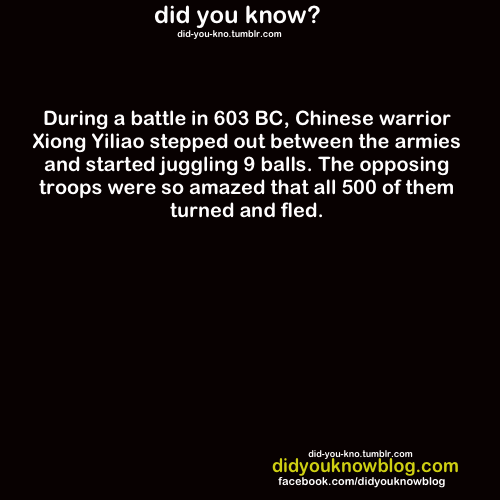Boring Old Werewolf Instincts:
Boring old werewolf instincts:
Sexual jealousy
Constant aggression
Rigid hierarchy
Must win sports
Homophobia And Sexism Is Normal™
Eat people
Cool new werewolf instincts:
There is no five second rule
Corvids are friends
Hang out as a pack
Karaoke
Gotta pee
More Posts from Mattlindel and Others
2010 me: who are you
2016 me: im you but gayer

Source
Do y’all know where the phrase “eat the rich” comes from or do you just repeat it cause you heard it elsewhere?
It’s not a bad thing, I just saw someone say “we never said who would eat the rich” and realized a lot of y’all might not have heard the full quote
It’s from Rousseau and it’s “When the people shall have nothing more to eat, they will eat the rich"
And, well, there’s a lot of people with nothing to eat…
205
a
ao3 mcu a:aou abo bdsm ot3 hs au pwp

This is the lucky clover cat. reblog this in 30 seconds & he will bring u good luck and fortune.

TOMORROW IS HALLOWEEN!!!

ok but what if like. werewolves transform under the full moon but theres just this one and by day hes a big tough guy and then when he transforms hes a tiny dog. just fucking. just fucking turns into the tiniest, fluffiest dog

imagine that howling at the moon
In linguistics, a filler is a sound or word that is spoken in conversation by one participant to signal to others that he/she has paused to think but is not yet finished speaking. These are not to be confused with placeholder names, such as thingamajig, which refer to objects or people whose names are temporarily forgotten, irrelevant, or unknown.
In Afrikaans, ah, em, and eh are common fillers.
In Arabic, يعني yaʿni (“I mean”) and وﷲ wallāh(i) (“by God”) are common fillers.[2][3][4]
In American Sign Language, UM can be signed with open-8 held at chin, palm in, eyebrows down (similar to FAVORITE); or bilateral symmetric bent-V, palm out, repeated axial rotation of wrist (similar to QUOTE).
In Bengali, mane (“it means”) is a common filler.
In Catalan, eh /ə/, doncs (“so”), llavors (“therefore”), and o sigui (“it means”) are common fillers.
In Czech, tak or takže (“so”), prostě (“simply”), jako (“like”) are used as fillers. Čili (“or”) and že (“that”, a conjunction) might also be others. A person who says jako and prostě as fillers might sound a bit simple-minded to others.[5]
In Danish, øh is one of the most common fillers.
In Dutch, eh, ehm, and dus are some of the more common fillers.
In Esperanto, do (“therefore”) is the most common filler.
In Filipino, ah, eh, ay, and ano are the most common fillers.
In Finnish, niinku (“like”), tota, and öö are the most common fillers.
In French, euh /ø/ is most common; other words used as fillers include quoi (“what”), bah, ben (“well”), tu vois (“you see”), and eh bien (roughly “well”, as in “Well, I’m not sure”). Outside of France, other expressions are tu sais (“you know”), t’sais’veux dire? (“you know what I mean?”), or allez une fois (“go one time”). Additional filler words include genre (“kind”), comme (“like”), and style (“style”; “kind”)
In German, a more extensive series of filler words, called modal particles, exists, which actually do give the sentence some meaning. More traditional filler words are äh /ɛː/, hm, so /zoː/, tja, and eigentlich (“actually”)
In Hebrew, eh is the most common filler. Em is also quite common.
In Hindi, matlab (“it means”) and “Mah” are fillers.
In Hungarian, common filler words include hát (well…) and asszongya (a variant of azt mondja, which means “it says here…”).
In Icelandic, a common filler is hérna (“here”). Þúst, a contraction of þú veist (“you know”), is popular among younger speakers.
In Indonesian (Bahasa Indonesia), anu is one of the most common fillers.
In Italian, common fillers include “tipo” (“like”), “ecco” (“there”) and “cioè” (“actually”)
In Irish Gaelic, abair /ˈabˠəɾʲ/ (“say”), bhoil /wɛlʲ/ (“well”), and era /ˈɛɾˠə/ are common fillers, along with emm as in Hiberno-English.
In Japanese, common fillers include eetto, ano, sono, and ee.
In Kannada,Matte for also,Enappa andre for the matter is are the common fillers.
In Korean, eung, eo, ge, and eum are commonly used as fillers.
In Lithuanian, nu, am and žinai (“you know”) are common fillers.
IN Maltese and Maltese English, mela (“then”), or just la, is a common filler.
In Mandarin Chinese, speakers often say 这个 zhège/zhèige (“this”) or 那个 nàge/nèige (“that”). Another common filler is 就 jìu (“just/precisely”).
In Norwegian, common fillers are øh, altså, på en måte (“in a way”), ikke sant (literally “not true?”, “no kidding”, or “exactly”), vel (“well”), and liksom (“like”). In Bergen, sant (“true”) is often used instead of ikke sant. In the Trøndelag region, skjø’ (“see?” or “understand?”) is also a common filler.
In Persian, bebin (“you see”), چیز “chiz” (“thing”), and مثلا masalan (“for instance”) are commonly-used filler words. As well as in Arabic and Urdu, يعني yaʿni (“I mean”) is also used in Persian. Also, eh is a common filler in Persian.
In Portuguese, tipo (“like”) is the most common filler.
In Romanian, deci /detʃʲ/ (“therefore”) is common, especially in school, and ă /ə/ is also very common (can be lengthened according to the pause in speech, rendered in writing as ăăă), whereas păi /pəj/ is widely used by almost anyone.
In Russian, fillers are called слова-паразиты (“vermin words”); the most common are Э-э (“eh”), это (“this”), того (“that”), ну (“well”), значит (“it means”), так (“so”), как его (“what’s it [called]”), типа (“like”), and как бы (“[just] like”).
In Serbian, znači (“means”) and ovaj (“this”) are common fillers.
In Slovak, oné (“that”), tento (“this”), proste (“simply”), or akože are used as fillers. The Hungarian izé (or izí in its Slovak pronunciation) can also be heard, especially in parts of the country with a large Hungarian population. Ta is a filler typical of Eastern Slovak and one of the most parodied features.
In Slovene, pač (“but”, although it has lost that meaning in colloquial, and it is used as a means of explanation), a ne? (“right?”), and no (“well”) are some of the fillers common in central Slovenia, including Ljubljana.
In Spanish, fillers are called muletillas. Some of the most common in American Spanish are e /e/, este (“this”), and o sea (roughly means “I mean”).[6], in Spain the previous fillers are also used, but ¿Vale? (“right?”) and ¿no? are very common too.
In Swedish, fillers are called utfyllningsord; some of the most common are öhm, ja (“yes”), ba (comes from “bara”, which means “just”), asså or alltså (“therefore”, “thus”), va (comes from “vad”, which means “what”), and liksom and typ (both similar to the English “like”).
In Ukrainian, ой /ɔj/ is a common filler.
In Urdu, yani (“meaning…”), falan falan (“this and that”; “blah blah”), umm, and aaa are also common fillers.
In Telugu, ikkada entante (“Whats here is…”) and tarwatha (“then…”) are common and there are numerous like this.
In Tamil, paatheenga-na (“if you see…”) and apparam (“then…”) are common.
In Turkish, yani (“meaning…”), şey (“thing”), “işte” (“that is”), and falan (“as such”, “so on”) are common fillers.
In Welsh, de or ynde is used as a filler (loosely the equivalent of “You know?” or “Isn’t it?”). Ym… and Y… are used similarly to the English “um…”.
-
 voice-of-dissent reblogged this · 2 weeks ago
voice-of-dissent reblogged this · 2 weeks ago -
 mlgkid-hd liked this · 2 weeks ago
mlgkid-hd liked this · 2 weeks ago -
 mlgkid-hd reblogged this · 2 weeks ago
mlgkid-hd reblogged this · 2 weeks ago -
 lazyowl reblogged this · 2 weeks ago
lazyowl reblogged this · 2 weeks ago -
 le-random-yeet-up reblogged this · 2 weeks ago
le-random-yeet-up reblogged this · 2 weeks ago -
 flamewild reblogged this · 2 weeks ago
flamewild reblogged this · 2 weeks ago -
 draco2368 liked this · 2 weeks ago
draco2368 liked this · 2 weeks ago -
 funkylilomen reblogged this · 2 weeks ago
funkylilomen reblogged this · 2 weeks ago -
 circusbeer liked this · 2 weeks ago
circusbeer liked this · 2 weeks ago -
 slime-enthusiast reblogged this · 2 weeks ago
slime-enthusiast reblogged this · 2 weeks ago -
 jaguarsp0tted reblogged this · 2 weeks ago
jaguarsp0tted reblogged this · 2 weeks ago -
 almacknjack reblogged this · 2 weeks ago
almacknjack reblogged this · 2 weeks ago -
 almacknjack liked this · 2 weeks ago
almacknjack liked this · 2 weeks ago -
 ortie-pnk reblogged this · 2 weeks ago
ortie-pnk reblogged this · 2 weeks ago -
 ortie-pnk liked this · 2 weeks ago
ortie-pnk liked this · 2 weeks ago -
 soye-soye reblogged this · 2 weeks ago
soye-soye reblogged this · 2 weeks ago -
 distinguishedmakerpandapatrol reblogged this · 2 weeks ago
distinguishedmakerpandapatrol reblogged this · 2 weeks ago -
 inplodinggofer616 reblogged this · 3 weeks ago
inplodinggofer616 reblogged this · 3 weeks ago -
 d3ad-r4tz liked this · 3 weeks ago
d3ad-r4tz liked this · 3 weeks ago -
 lemonpilotingmech liked this · 3 weeks ago
lemonpilotingmech liked this · 3 weeks ago -
 anonym-potato liked this · 3 weeks ago
anonym-potato liked this · 3 weeks ago -
 anonym-potato reblogged this · 3 weeks ago
anonym-potato reblogged this · 3 weeks ago -
 hidden671254839 reblogged this · 3 weeks ago
hidden671254839 reblogged this · 3 weeks ago -
 nunchijeu reblogged this · 3 weeks ago
nunchijeu reblogged this · 3 weeks ago -
 cjrydel liked this · 3 weeks ago
cjrydel liked this · 3 weeks ago -
 megamijadeheart reblogged this · 3 weeks ago
megamijadeheart reblogged this · 3 weeks ago -
 megamijadeheart liked this · 3 weeks ago
megamijadeheart liked this · 3 weeks ago -
 solidsquish reblogged this · 3 weeks ago
solidsquish reblogged this · 3 weeks ago -
 mynamesnotjim liked this · 3 weeks ago
mynamesnotjim liked this · 3 weeks ago -
 cin-the-moth reblogged this · 3 weeks ago
cin-the-moth reblogged this · 3 weeks ago -
 leafandluke reblogged this · 3 weeks ago
leafandluke reblogged this · 3 weeks ago -
 leafandluke liked this · 3 weeks ago
leafandluke liked this · 3 weeks ago -
 bootlegmuppet liked this · 3 weeks ago
bootlegmuppet liked this · 3 weeks ago -
 thequeenwanderer reblogged this · 3 weeks ago
thequeenwanderer reblogged this · 3 weeks ago -
 the-stars-we-call-home reblogged this · 3 weeks ago
the-stars-we-call-home reblogged this · 3 weeks ago -
 nocturne18 liked this · 3 weeks ago
nocturne18 liked this · 3 weeks ago -
 sadcabbages reblogged this · 3 weeks ago
sadcabbages reblogged this · 3 weeks ago -
 sadcabbages liked this · 3 weeks ago
sadcabbages liked this · 3 weeks ago -
 endlesssforest liked this · 3 weeks ago
endlesssforest liked this · 3 weeks ago -
 catspar99 reblogged this · 3 weeks ago
catspar99 reblogged this · 3 weeks ago -
 catspar99 liked this · 3 weeks ago
catspar99 liked this · 3 weeks ago -
 lavender-spike liked this · 3 weeks ago
lavender-spike liked this · 3 weeks ago -
 spookyteeth liked this · 3 weeks ago
spookyteeth liked this · 3 weeks ago -
 dykedaji liked this · 3 weeks ago
dykedaji liked this · 3 weeks ago -
 anakenas1 reblogged this · 3 weeks ago
anakenas1 reblogged this · 3 weeks ago -
 anakenas1 liked this · 3 weeks ago
anakenas1 liked this · 3 weeks ago -
 skullkidy liked this · 3 weeks ago
skullkidy liked this · 3 weeks ago -
 misss-claire liked this · 3 weeks ago
misss-claire liked this · 3 weeks ago